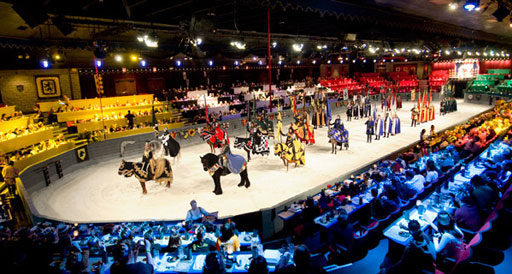
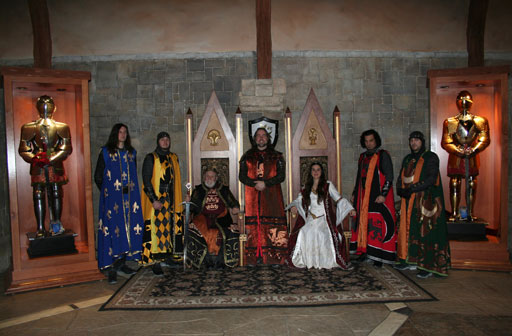
(WTOP/Alicia Lozano)
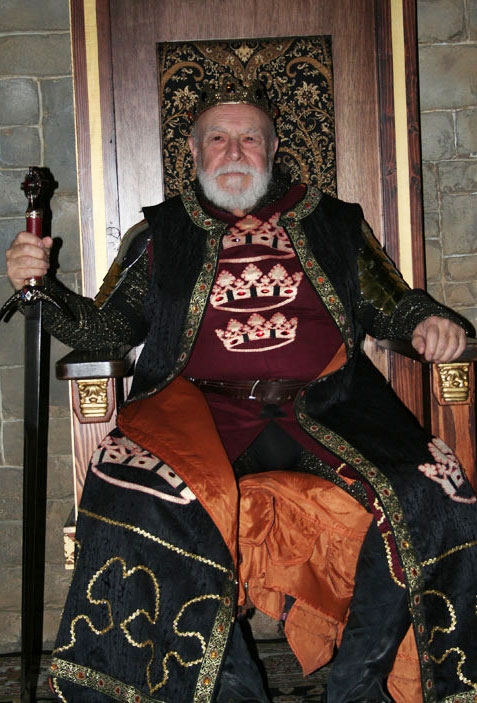
Phil Amico, King Carlos
Prior to becoming king, Amico spent 40 years managing food service operations throughout the region. As he was getting to retire six years ago, the volunteer reader decided to peruse the talent section of Craigslist and came across a Medieval Times listing that intrigued him:
"I just decided to take a chance. That was the first time I had ever looked in the talent section. Don't ask me why I did. It just happened."
(WTOP/Alicia Lozano)
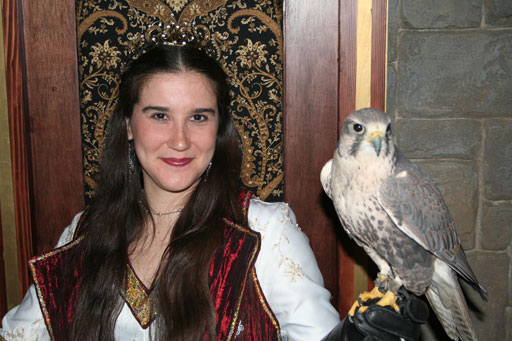
Melissa Poussart, head falconer and Princess Catalina
Poussart joined Medieval Times after working in wildlife rehabilitation. As head falconer, she spends a great deal of time training and bonding with the show's birds, Dakota and Amadeus (pictured here).
On working with falcons:
"You're doing something that probably more than 99 percent of the population has no experience with. It's definitely very rewarding, very exciting."
(WTOP/Alicia Lozano)
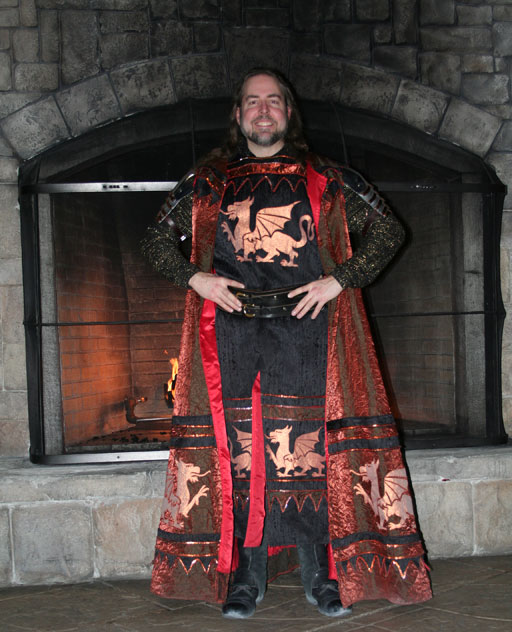
Joe Albright, Lord Chancellor and emcee
No show is complete without an emcee, a role Albright fills with gusto and enthusiasm. He ushers the crowd in, tells everyone what to expect from the night and narrates the games. Trained on the stage, Albright relishes the ability to be a full-time, salaried actor.
On never having imaged life as a Medieval Times emcee:
"I got here and thought 'Well, I certainly played [Dungeons and Dragons] a lot as a kid, so this fits right in.'"
(WTOP/Alicia Lozano)
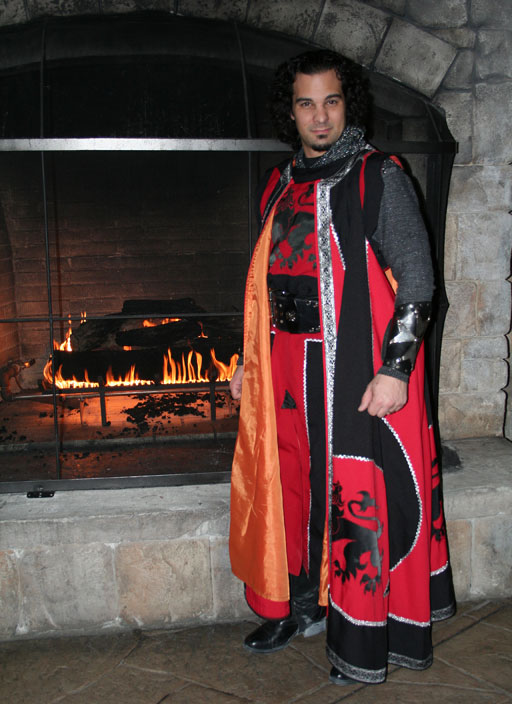
Sam Talley, head knight
Talley stumbled upon Medieval Times when it was just a facade at Arundel Mills Mall. After completing a three-month training program at the company's ranch in Sanger, Texas, Talley joined the program full-time.
On becoming head knight:
"It's a very unique venue. There is nothing you can really do prior to becoming a knight or being a squire in the show that can give you any kind of experience or foresight into this. It really is a discipline unto itself."
(WTOP/Alicia Lozano)
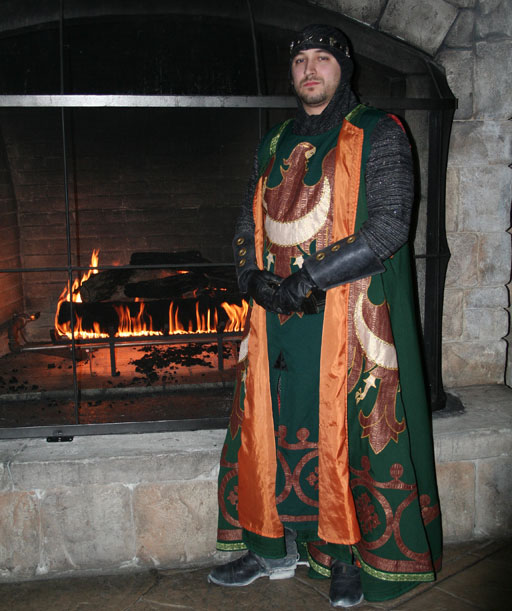
Matt Sheils, assistant head knight
Sheils got his start at Medieval Times 10 years ago ago when he was just 17.
He recently graduated from Towson University with a degree in environmental science with a concentration in geology.
On learning how to work with horses:
"I had never even seen a horse before I started working here to be honest with you. I didn't realize how big they are until I stood next to one."
(WTOP/Alicia Lozano)
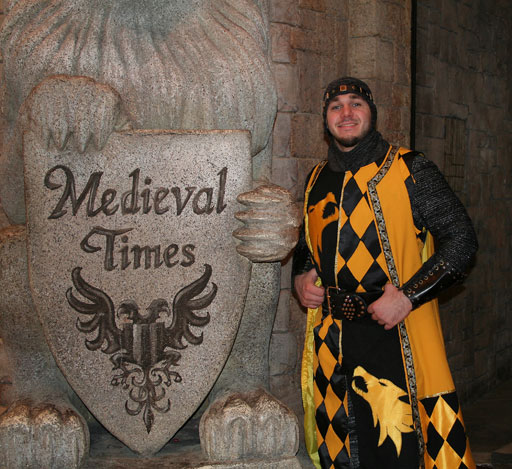
Hinson received training at a three-month "knight bootcamp" in Sanger, Texas.
A typical day consisted of waking up at 7 a.m. for a morning jog, and then riding horses for about an hour before strength training exercises, he says.
After lunch, the trainees spent the afternoon learning fight sequences for the show.
Like most knights, Hinson had no prior experiences with weapons or horses. His first steed was named Wild Eyes: "He was a big puppy dog. They're all puppy dogs, and they're all really smart."
(WTOP/Alicia Lozano)
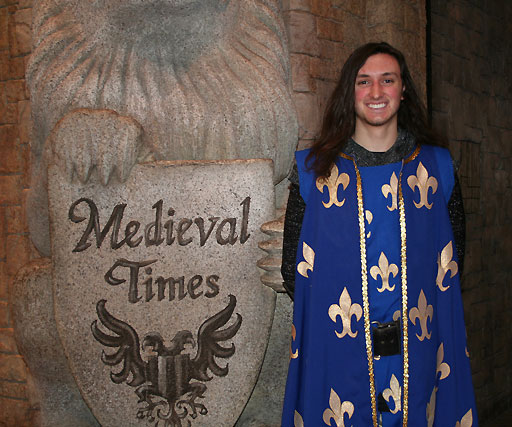
Michael Riessett, knight
The 21-year-old Towson University student became interested in squiring from his high school art teacher, who worked as one of the princesses.
On his three years in the production:
"It's a lot of fun. It's a lot of work, too. It takes a lot of heart, a lot of athleticism, but it's a lot of fun."
(WTOP/Alicia Lozano)
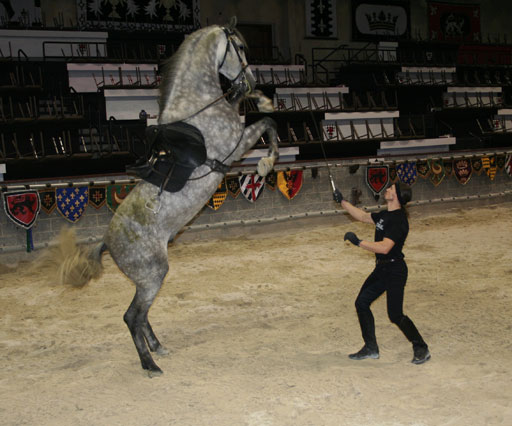
Originally reserved for nobility, commoners didn't legally have the right to purchase one until just 80 years ago, says Amy Star, national show chair of the International Andalusian and Lusitano Horse Association.
(WTOP/Alicia Lozano)
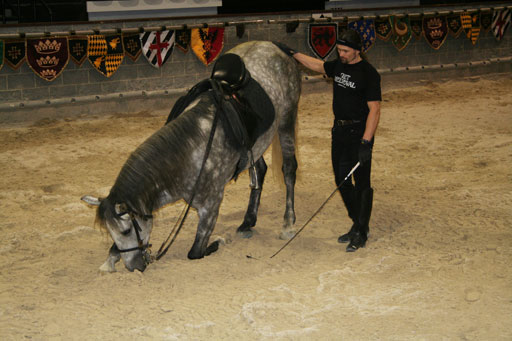
Once ready, some learn dressage, the "highest expression of horse training," according to the International Equestrian Federation.
(WTOP/Alicia Lozano)
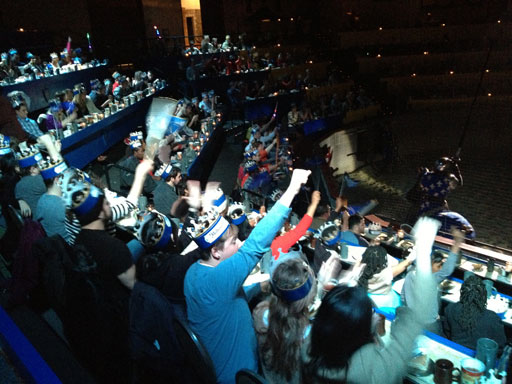
(WTOP/Alicia Lozano)
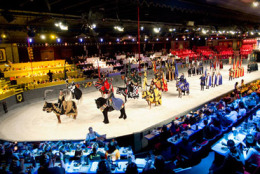
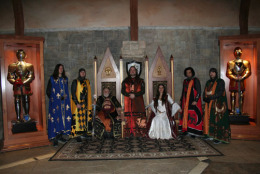
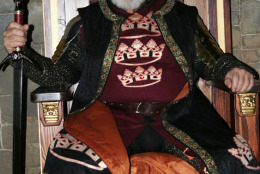
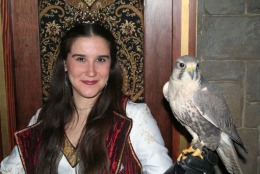
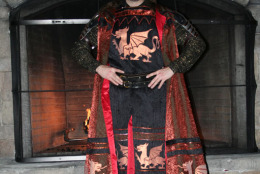
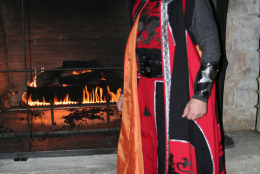
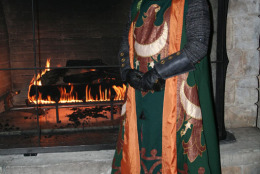
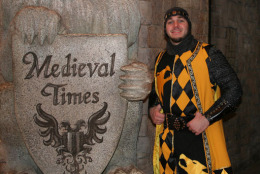
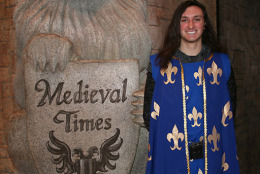
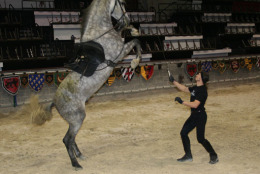
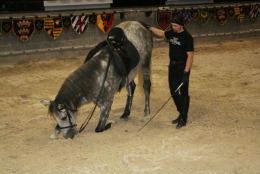
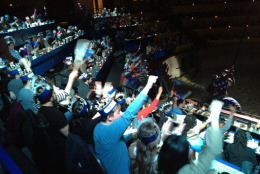
Alicia Lozano, wtop.com
HANOVER, Md. – Indiscreetly wedged between a Best Buy and a mall in suburban Maryland, Medieval Times Dinner & Tournament transports visitors to a bygone era of jousting, mead and wenches.
Elegant Andalusian horses prance as knights covered in chainmail battle to the death, or at least until the next performance.
The 1,000-person arena bursts with cheering fans both young and old, waving their knight’s flag and sporting paper crowns. And remember, there are no forks at Medieval Times.
Founded in 1973 in Spain, the dinner show has become a wildly popular event for people who appreciate a serving of kitsch with their chicken and ribs. Aside from the pageantry, the tournament also offers impressive equestrian performances from some of the country’s most regal showmen.
Andalusian horses, known for their intelligence and agility, were once strictly reserved for royalty. Commoners couldn’t purchase the breed until 80 years ago, says Amy Star, national show chair of the International Andalusian and Lusitano Horse Association. The horses have become central to Medieval Times, which breeds many of its own equines in Sanger, Texas.
At the Maryland castle, which shares a parking lot with Arundel Mills Mall, the Andalusians are the main attraction. About 20 perform each night and are stabled on the premises. Another six reside at the Crownsville, Md. ranch, where they rest in between shows and undergo extensive practice in dressage riding.
“They are a horseman’s horse,” Star says.
“Once a horseman has worked with Andalusians, rarely do they go back to other breeds.”
Watch a video of horse trainer Georgiy Gibizov below:
When the horse ballet ends, the human spectacle begins. Knights and squires take to the arena, each settling into roles befitting their rank.
Like the Andalusians, the knights have completed weeks of training at what one cast member referred to as “knight bootcamp.” Typically held at the same Texas ranch where the horses are bred, would-be knights learn how to wield swords and axes, work with horses and perform stunts.
The qualifications to serve in the king’s guard?
“We look for people who are athletic, people who have done team sports before,” says assistant head knight Matt Sheils. “Working the way we do, it’s a very team- oriented environment. You can’t swing swords at people you don’t trust.”
But head knight Sam Talley, who joined the Maryland castle just before it opened in 2003, looks for the type of qualities that an actual knight would have possessed centuries ago.
“Gentleman is the key word,” he says. “The wheels and cogs function much like they would in a professional sports team, so those guys that have a good attitude and strong work ethic.”
And don’t forget the desire to perform in front of thousands of people.
“Yes, you do need a little bit of an ego,” he says.
Meet more of the cast by clicking through the photo gallery above and to the right.
Follow @WTOP on Twitter.







